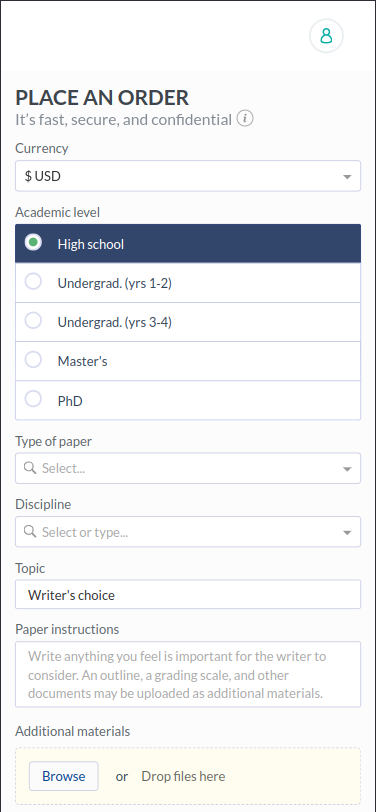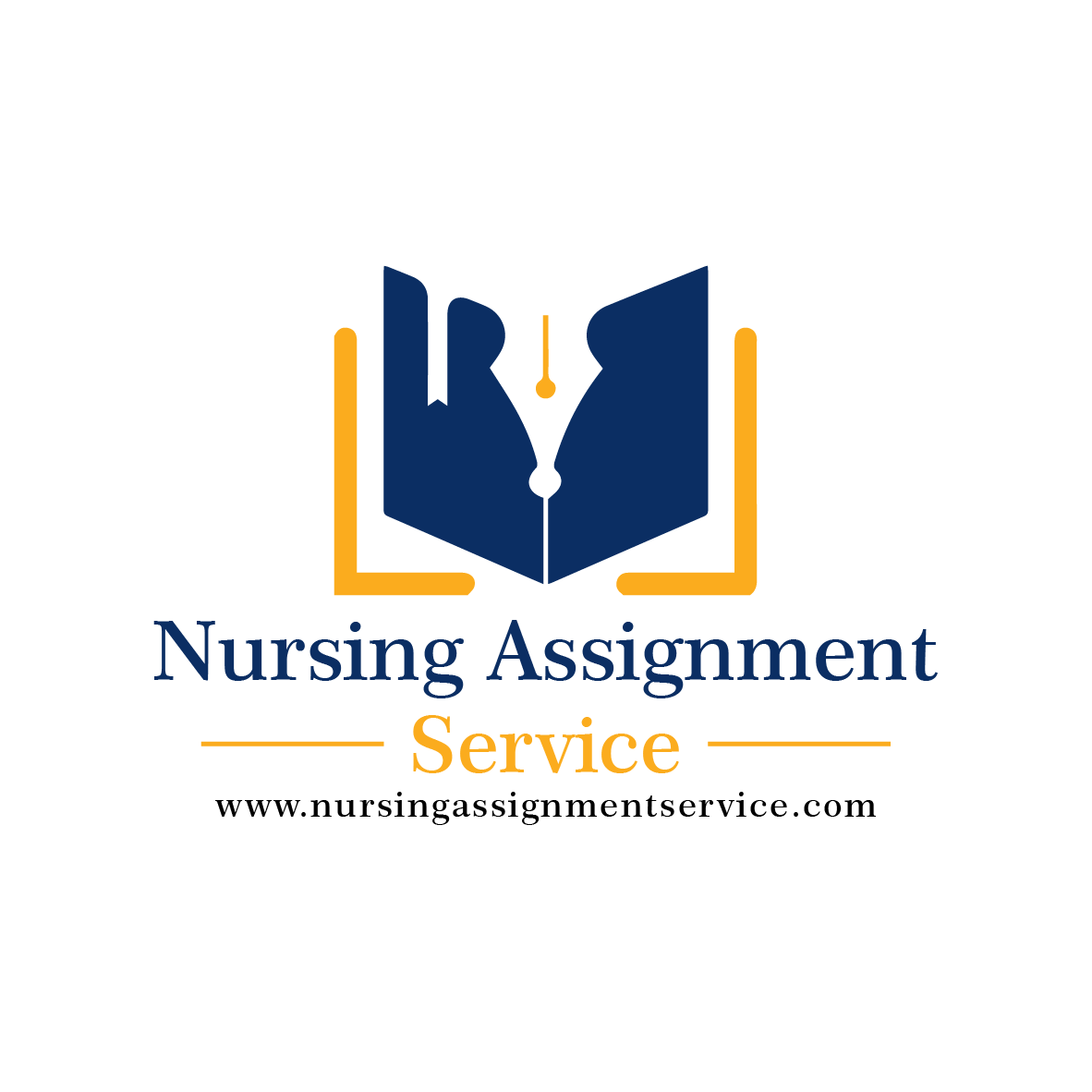DNP 810 Topic 3 DQ1
Topic 3: Genetics II
Objectives:
1. Evaluate models for the creation of multigenerational family health histories.
2. Justify the use of comprehensive health and physical assessments that incorporate knowledge about genetic, environmental, and genomic influences and risk factors.
Topic 3 DQ 1
A multigenerational family health history can facilitate the management of a patient’s disease. What model would you use to create a multigenerational family health history for a patient? Explain. Support your rationale with a minimum of two scholarly sources.
Topic 3 DQ 2
Why is it important to have a comprehensive health and physical assessment that includes information on environment and genomic influences? How can the doctoral-prepared nurse
apply this information in practice? Explain. Support your rationale with a minimum of two scholarly sources.
Case Study: Part 2
You will be creating a case study in stages over four course topics. This assignment will add to your previous work in Topic 2. Use an example from your own personal practice, experience, or your own personal/family (however, simulated cases are not acceptable for practice hours and therefore not acceptable for this assignment). Examples might include a patient with Duchesne’s muscular dystrophy, Huntington’s disease, Down’s syndrome, sickle-cell anemia, BRCA 1 or BRCA 2 mutations, or another genetic disorder that you or the organization you practice in may specialize in treating.
General Requirements:
Use the following information to ensure successful completion of the assignment:
- This assignment uses a rubric. Please review the rubric prior to beginning the assignment to become familiar with the expectations for successful completion.
- Doctoral learners are required to use APA style for their writing assignments. The APA Style Guide is located in the Student Success Center.
- This assignment requires that at least two additional scholarly research sources related to this topic and at least one in-text citation for each source be included.
- You are required to submit this assignment to Lopeswrite. A link to the Lopeswrite technical support articles is located in Class Resources if you need assistance.
Directions:
For this assignment (Part 2 of the Case Study), write a paper (1,000-1,250 words) incorporating genetics information learned from assigned readings in Topics 1-3. Include the following:
1. Describe if chromosomal analysis is/was indicated.
2. Detail the causes of the disorder.
3. Describe the disorder in terms of its origin as either a single gene inheritance or as a complex inheritance and considerations for practice and patient education.
4. Analyze the gene mutation of the disease, as well as whether it is acquired or inherited, and how the mutation occurs.
Sample 1 Topic 3 DQ 1 Post
A multigenerational medical family history also known as a pedigree or family tree is a cost-effective tool in preconception counseling to identify couples at risk to have offspring with inherited disorders and to identify if either partner has a personal risk for a disorder with a genetic etiology. Interpretation of a medical family history can provide risk assessment for reproductive planning and choices, inform a diagnosis to help identify a patient’s medical screening needs and clinical management, and build rapport with the patient or couple.
The use of standardized pedigree is paramount to healthcare delivery.
The use of family health history tools to analyze individual patient risk can be complex. The ability to predict risk is limited to the accuracy and completeness of the information available to those completing the history. Hence, there has been a lot of effort in improving the format of family health history data collection. Pedigree workbooks and online interactive software have been identified as potential solutions to improve the accuracy of each person’s data entry (Lin, Myers, Koehly & Marcum, 2019). Family health history that is obtained from
multiple family members will have better accuracy and when available to clinicians, they can improve the prediction and risk assessments due to the higher degree of completeness and accuracy of the family health history report. Information from multiple family members can provide cross-validation of information and
improve the prediction of risk. (Lin, Myers, Koehly & Marcum, 2019).
Additionally, the status of family members whom others are reporting may be inaccurate, incomplete or false-positive or false-negative. Hence, multifamily entry of personal or individual health information into a database is helpful to determine accurate levels of individual risk (Lin, Myers, Koehly & Marcum, 2019). Since there
are barriers to collecting detailed family health history, tools such as MeTree that is computer-based with a clinical decision support system helps to streamline the process and allow for more accurate data entry, risk reports and recommendations (Buchanan et al., 2015). A personalized pedigree that represents family morbidity for diseases such as diabetes, heart disease and cancer are able to be produced and provide a risk assessment and behavioral strategies to modify risk (Wilson et al., 2016)
References
Buchanan,
A., Christianson, C., Himmel, T., Powell, K., Agbaje, A., Ginsburg, G., Henrich, V., & Orlando, L. (2015). Use of a Patient-Entered Family Health History Tool with Decision Support in Primary Care: Impact of Identification of Increased Risk Patients on Genetic Counseling Attendance. Journal of Genetic
Counseling, 24(1), 179-188. https://doi-org.lopes.idm.oclc.org/10.1007/s10897-014-9753-0
Lin, J., Myers, M.F., Koehly, L.M. & Marcum, C. S. (2019). A Bayesianhierarchical logistic regression model of multiple informant family health histories. BMC Med Res Methodol 19, 56. https://doi.org/10.1186/s12874-019-0700-5
Wilson, C. J., de la Haye, K., Coveney, J., Hughes, D. L., Hutchinson, A., Miller, C., Prichard, I., Ward, P., & Koehly, L. M. (2016). Protocol for a randomized controlled trial testing the impact of feedback on familial risk of chronic diseases on family-level intentions to participate in preventive lifestyle behaviors. BMC Public Health, 16 (1), 1-11. https://doi-org.lopes.idm.oclc.org/10.1186/s12889-016-3623-7
Sample 2 Topic 3 DQ 1 Post
There are multiple tools available to evaluate a family health history. Some are person-facing meaning the patient controls and initiates the profile. Others are clinician-based where the data is managed and screened by the clinician. Some are web-based while others are not. Healthcare consumers have a multitude of health apps to select from. According to Singh et al. (2016), there are more than 165,000 health apps available in app stores for various smartphone operating systems, including the popular iTunes and Google Play. This can be daunting for a healthcare consumer to select an effective app to manage or mitigate chronic disease risk. There are numerous factors to consider as well. Some apps will allow families to contribute to the family health history while others do not. Some apps are collaborative with healthcare providers as well. Savy and prudent clients should review apps to ensure the resource is reliable as well. It is, for this reason, I would recommend the Family Healthware™.
Family Healthware™ is the only family history tool to be cleared by the Food and Drug Administration (Singh et al., 2016). It is web-based and can look at common life-threatening illnesses including heart disease, stroke, diabetes, colorectal cancer, breast cancer, and ovarian cancer (Center for Disease Control and Prevention (CDC), 2022). While this is not an all-inclusive list, it is a comprehensive list of common life-altering ailments. The risk of developing these diseases is twice that for people who have a first-degree relative with these specific conditions (Ginsburg et al., 2019). Because of this increased likelihood, it is a meaningful and concise tool to use. In using this program, the pedigree is reviewed, a risk assessment is completed, a health score is given along with screening recommendations, and a prevention plan (Welch et al., 2018).
Using a multigenerational family health history should involve both the patient, family, and provider to be effective. Using a tool that can assess risk and recommend personalized prevention makes it meaningful to the patient. An ideal model is incorporated into an electronic health care system to allow information flow between the individual and the healthcare team. Conducting a thorough family health history can be a complex endeavor that the healthcare team needs to partner with the patient and family in order to deliver precision patient-focused care.
References
Centers for Disease Control and Prevention. (2022, May 25th). Family Healthware™ . https://www.cdc.gov/genomics/famhistory/famhist_healthware.htm
Ginsburg, G. S. Wu, R. R. & Orlando, L. A. (2019). Family health history: underused for actionable risk assessment. Lancet, 394 (10198), 596-603. Doi: 10.106/S0140-6736(19)31275-9
Singh, K., Drouin, K., Newmark, L. P., Filkins, M., Silvers, E., Bain, P. A., Zulman, D. M., Lee, J. H., Rozenblum, R., Pabo, E., Landman, A., Klinger, E. V., & Bates, D. W. (2016). Patient-Facing Mobile Apps to Treat High-Need, High-Cost Populations: A Scoping Review. JMIR mHealth and uHealth, 4(4), e136. https://doi.org/10.2196/mhealth.6445
Welch, B. M., Wiley, K., Pflieger, L., Achiangia, R., Baker, K., Hughes-Halbert, C., Morrison, H., Schiffman, J., & Doerr, M. (2018). Review and Comparison of Electronic Patient-Facing Family Health History Tools. Journal of Genetic Counseling, 27(2), 381–391. https://doi-org.lopes.idm.oclc.org/10.1007/s10897-018-0235-7
Sample 1 Topic 3 DQ 2 Post
Comprehensive health and physical assessment that includes information on environmental and genomic influences are vital when caring for patients. For example, precision health, and the evolution of precision
medicine, combine genetic and genomic sequence, protein, metabolite, and microbiome information collectively known as “omics” with lifestyle, social, economic, cultural, and environmental factors. Such data can be informed by wearable devices, and clinical information from electronic health records, to inform precise molecular classifications that specify disease diagnosis, treatment, and prevention for a patient. Nurse leaders have identified precision health as a priority for advancing nursing science because it considers individual variability in personal and environmental characteristics, including lifestyle, existing co-morbidities, biomarkers, cognitive and emotional factors, and genetic, epigenetic, and other omics factors.
Successful implementation of precision health requires interprofessional collaborations with computational data scientists, bioinformatics, statisticians, genomics medicine, and a range of multidisciplinary clinical content experts, of which nursing plays an essential role. The DNP can be prepared and become qualified to conduct clinical and translational scientific research, engage with patients and families, recruit subjects and monitor patient health and symptoms in interventional studies, and serve as powerful advocates for patients, families, communities, and populations. In addition, this can be a valuable tool for DNP’s and give them the opportunity to become advanced in their practice through innovative transformations in health care implementations. It also helps in educating, training, and knowledge of omics and precision health which can be incorporated to advance the nursing practice (Fu et al., 2020).
Genomics relevance is correlated to health overall, including risks and indicators of disease, therapeutic actions and decisions, advancement of new therapies, and responses to treatment interventions. DNP‘s needs to be confident in their ability to comprehend this science, advocate, explain information, support, and educate patients and their families through their lifespan. The translation of academic knowledge to bedside care begins with nurse educators successfully implementing novel singular experiential opportunities for the student to incorporate their actual and self-perceived knowledge into their professional (Sharoff., et al 2019). Understanding ‘multimorbidity’ as a complex adaptive systems response to biobehavioral and socio-environmental networks is essential. Thus, designing integrative care delivery approaches that more adequately address the underlying disease processes as the manifestation of a state of physiological dysregulation is essential.
The DNP can utilize this framework to shape care delivery approaches to meet the individual’s care needs in the context of his or her underlying illness experience. They can recognize multimorbidity and its symptoms as the product of complex physiological processes, namely, stress
activation and mitochondrial energetics, and suggests new opportunities for treatment and prevention (Sturmber et al., 2016).
References
Fu, M. R., Kurnat-Thoma, E., Starkweather, A., Henderson, W. A., Cashion, A. K., Williams, J. K., Katapodi, M. C., Reuter-Rice, K., Hickey, K. T., Barcelona de Mendoza, V., Calzone, K., Conley, Y. P., Anderson,
C. M., Lyon, D. E., Weaver, M. T., Shiao, P. K., Constantino, R. E., Wung, S.-F., Hammer, M. J., & Voss, J. G. (2020). Precision health: A nursing perspective. International Journal of Nursing Sciences, 7(1), 5–12. https://doi.org/10.1016/j.ijnss.2019.12.008
Sharoff, L. (2019). A pilot assessment: Integrating a cystic fibrosis simulation scenario to enhance pre-licensure educational understanding of genomics. Journal of Nursing Education and Practice, 10(1), 24. https://doi.org/10.5430/jnep.v10n1p24
Sturmberg, J. P., Bennett, J. M., Martin, C. M., & Picard, M. (2016). “Multimorbidity” as the manifestation of network disturbances. Journal of Evaluation in Clinical Practice, 23(1), 199–208. https://doi.org/10.1111/jep.12587
Sample 2 Topic 3DQ 2Post
The use of genetic information has been utilized in healthcare for many years. However, It has been in the background for research of understanding disease processes and genetic abnormalities that increase risk and identifying treatments and which patients will respond best to those treatments (Melillo, 2022). In the last few years, we have seen an increase in genetic testing for both personal and health reasons. The time has come where those genetic tests can be utilized for more than just basic information. Genomic data is the only data that we cannot manipulate or change. It is data that will never change in our patients. Because of this, we can now determine patients at high risk for disease and manage earlier treatment. Patients can be guided through prevention measures and given resources to help them reduce that risk. For this reason, making genomics a part of any comprehensive exam is extremely important.
However, we also must consider that genetic testing only places patients at a higher risk for most disease processes. Because of this, genetic testing should be used as a guide rather than a determining factor and acted upon without any other corroborating information (Melillo, 2022). Nurses play an essential role in patient care. The DNP needs to have a firm understanding of genomics and how the results relate to the patient. This includes explaining the results and providing support when the results are less than desirable. In 2017 the Global Genomics Nursing Alliance was formed to help nursing bring genomics into nursing practice. A roadmap was developed to assist nurses, and nursing leadership in formulating plans on how best genomics fits into practice and how it is used (Tonkin et al., 2020).
References
Melillo, G. (2022, February 2). Has the time arrived to incorporate genetic testing into health care? AJMC. https://www.ajmc.com/view/has-the-time-arrived-to-incorporate-genetic-testing-into-health-care-
Tonkin, E., Calzone, K. A., Badzek, L., Benjamin, C., Middleton, A., Patch, C., & Kirk, M. (2020). A roadmap for global acceleration of genomics integration across nursing. Journal of Nursing Scholarship, 52(3), 329–338. https://doi.org/10.1111/jnu.12552
Our team of expert nursing writers at Nursing Assignment Service can help you with your DNP 810 Topic 3 DQ 1, place your order here.




